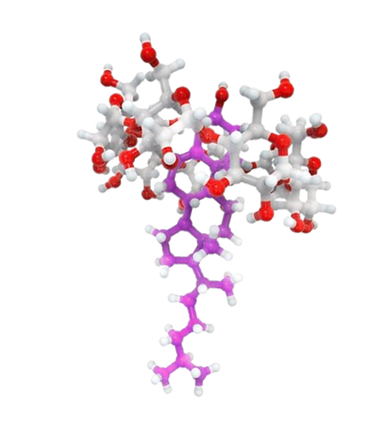CYCLODEXTRIN
Cyclodextrin
Cyclodextrin is a ring-structured molecule, composed of six to eight glucoses linked together in a cyclic shape. The cavity of the ring structure exhibits hydrophobicity, whereas the surface exhibits hydrophilicity. Such a ring structure allows it to host hydrophobic molecules such as cholesterol inside the cavity and solubilize them.

Cholesterol modulator
Due to their capacity to interact with and solubilize cholesterol, cyclodextrins act as cholesterol modulators by forming complexes with excess intracellular cholesterol, facilitating its distribution, storage, and efflux. This process significantly aids in restoring cellular cholesterol homeostasis and preventing cholesterol-induced toxicities. Directly targeting and reversing cholesterol accumulation, particularly within lysosomes, has significant implications for key cellular pathways.

Cyclodextrin in clinical trials
There are three types of cyclodextrins : alpha-, beta-, and gamma-cyclodextrins. They are composed of six, seven, and eight glucose units, respectively. Hydroxypropyl-beta-cyclodextrin (HPβCD) is a derivative of beta-cyclodextrin and is more soluble and less cytotoxic than natural beta-cyclodextrin. HPβCD is being investigated in clinical trials for diseases including Niemann-Pick type C, Alzheimer's disease, and chronic kidney disease.

Ototoxicity
Despite the promising effects of cholesterol modulators on regulating cholesterol homeostasis, ototoxicity can occur following peripheral or central nervous system-directed delivery of HPβCD. It has been experimentally shown in various animal species that both routes can result in the preferential loss of outer hair cells (OHCs) in the cochlea. Ototoxicity caused by loss of OHCs can cause permanent hearing loss, which should be managed with hearing aids.

Next-generation cyclodextrins
Renatus cyclodextrins are optimally designed to target intracellular cholesterol more effectively without disrupting the cell membrane and exhibit greater selectivity for cholesterol over other lipids compared to existing cyclodextrins.

